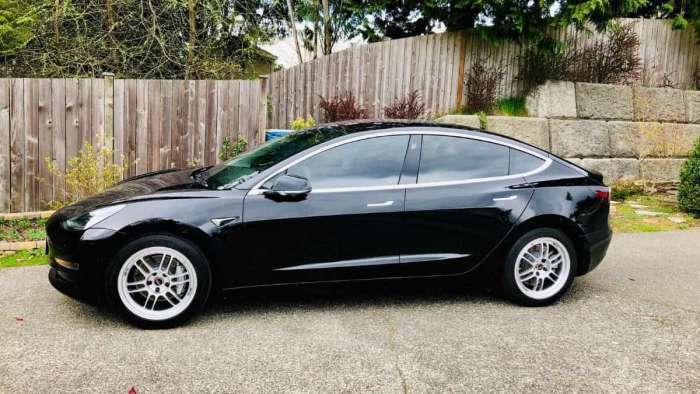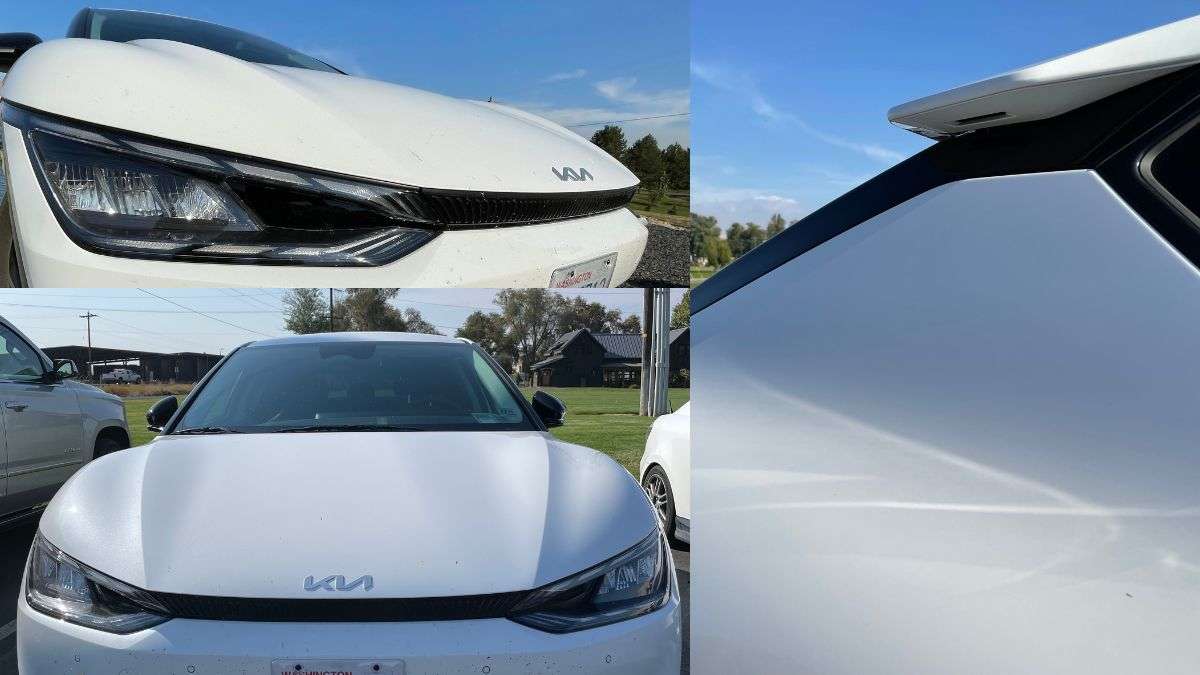
First, some backstory. My friend Tyson bought his EV6 in August. He bought the Wind e-AWD model from a Kia dealer in Spokane, Washington (he only had to pay a $4,000 “market adjustment”, which I didn’t think was too bad considering I’ve seen over $20,000 market adjustments on some Kia models). Tyson has taken a few road trips around the region in the two months he’s owned his EV6, putting about 2,500 miles on it so far. My Tesla Model 3 is 4 ½ years old, has a little over 37,000 miles on it, and is the long range RWD model. That means there is an inherently different driving/handling experience between our two EVs, since his is driven by all 4 wheels.
First impressions: The Kia EV6 Wind e-AWD model has a good deal more horsepower (320) and torque (446) than my RWD Model 3, almost 100 more HP and well over 100 more lb. ft in fact. That additional thrust would make a huge difference, you might think, but this model of the EV6 also weighs about 700 pounds more than my Model 3. Officially, the zero to 60 MPH times of our two cars are very close (5.1 for my Tesla, and 5.2 for the Kia). Unofficially, I believe my Model 3 is probably a little faster still to 60 MPH though, at just under 5 seconds. Regardless, the Kia acceleration felt quite similar to what I am used to in my Tesla and the main difference was in how the cars felt as they accelerated, due to the AWD vs RWD. With the Kia, the car felt a little more planted and in my Tesla the shove all comes from the rear and that makes it feel like the front end is just along for the ride.
The handling of the Kia is excellent, but given that it is a crossover and has taller tires than my Tesla sedan, it felt a little less sporty to drive with a small amount of body lean going around tight corners. I think the handling is otherwise pretty similar to my Tesla which isn’t the performance model and doesn’t have performance oriented tires. The interior space of the Kia feels very comfortable and high tech, especially from the front seat. It has an extra 15 cubic feet of volume compared to my Tesla, however, as a taller than average person (6 ft. 1 in.) my head very nearly touches the roof in the rear seats of the Kia (there was a little more headroom in the front seats). There is a good deal more leg room in the Kia’s back seats compared to the Tesla though. I have more head room in the front seat of my Tesla however. Overall, I am very impressed with the performance, fit and finish, features and interior comfort of the EV6 and while I might favor the Tesla Model 3 if I were only concerned about driving feel or sportiness, the Kia as a whole package is more appealing as a car. Would I buy it instead of a Tesla though? That’s an interesting question and sharing a little bit of my friend’s experience with his EV6 will help explain my answer. But my answer is no, I wouldn’t, unless I already had a Tesla.

My friend Tyson has had a little bit of trouble getting charged up on his road trips in his Kia. He said that the charging networks still “aren’t great” and that he expected his model, at about $60,000 to have all the bells and whistles (it has many, but not all). He has experienced fast chargers being out of commission and difficulty finding ones that can actually charge at the fastest rates, too (most of the CCS chargers around our state are still only capable of delivering 50kW or less). He also said that he really enjoys the freedom of no gas and fewer maintenance items, how comfortable the car is, and he values the tech features that it does have; ultimately he has grown to like it much more than he figured he would. Yet, whenever he goes further than the full range of his EV6 he has to contend with these extra hassles, at least for now. Even at our hotel in Walla Walla, which had free 240V charging, the EV6 could only charge up at 6kW from a single charging station while my Tesla could charge at up to 11kW from any of 4 Tesla Destination chargers there, not because the EV6 wasn’t capable, but because the infrastructure to maximize its potential isn’t as commonly available, yet. That is really the only reason, from a practical standpoint, that I would buy a Tesla before a Kia EV; the public charging infrastructure for non Tesla EVs still is not what it needs to be. Frankly, considering how many EVs companies like Kia, Ford, GM and others say they plan to sell in the next few years, there needs to be a herculean effort to rapidly expand both high speed 400-800V and 240V charging infrastructure. While that is apparently the plan, in Washington State, my question is: how soon is now? EV charging infrastructure isn’t keeping pace with sales, and that needs to change, immediately.
What do you think? Please leave your questions and comments below.
Images courtesy of Justin Hart.
Justin Hart has owned and driven electric vehicles for over 14 years, including a first generation Nissan LEAF, second generation Chevy Volt, Tesla Model 3, an electric bicycle and most recently a Kia Sorento PHEV. He is also an avid SUP rider, poet, photographer and wine lover. He enjoys taking long EV and PHEV road trips to beautiful and serene places with the people he loves. Follow Justin on Twitter for daily KIA EV news coverage.





